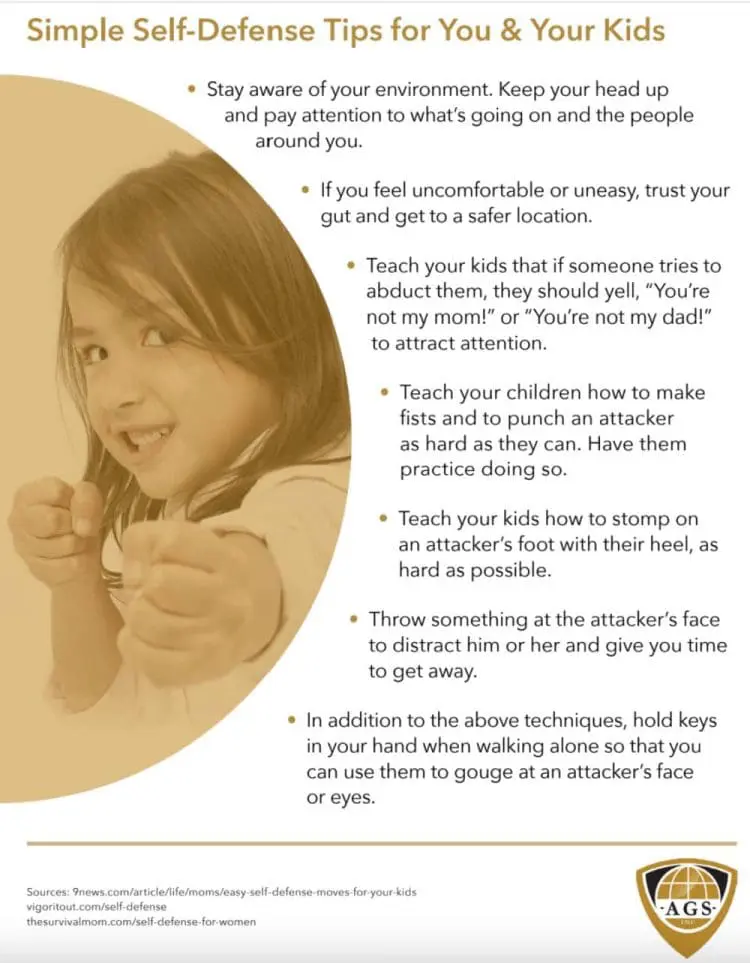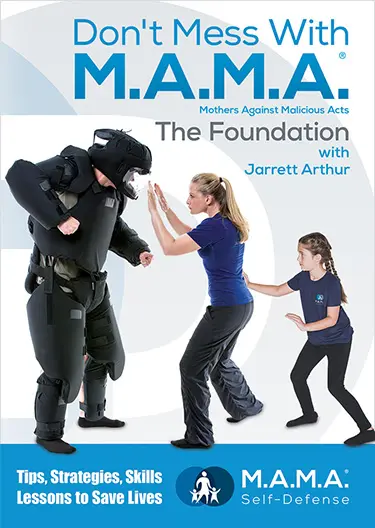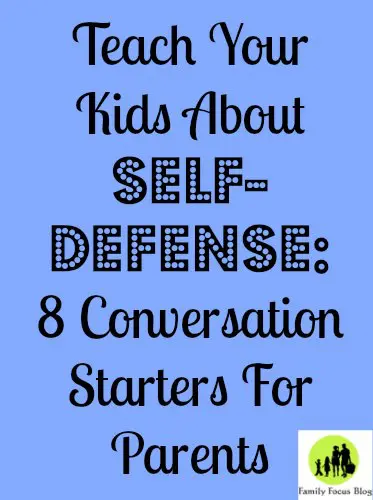Today I have some great tips from Jarrett Arthur with the intent to help parents teach kids about self-dense. Jarret Arthur is a self-defense expert and creator of M.A.M.A., a program that stands for Mothers Against Malicious Acts. As an expert in teaching mothers how to effectively protect their kids during the threat of a violent encounter, Jarrett also addresses how to teach children about self-defense. I finish up with a techniques of basic self defense for kids to learn. You may also wish to enroll them in self defense classes for kids.
Why Do Kids Need To Learn Self-Defense and When?
I’m not a gambler but I would easily bet an exorbitant amount of money that you can’t find one single parent in this country who has not, at the very least once, worried about their child being harmed by an act of violence either at the hands of an adult or another child. It’s both in your nature as a parent to be fearful of your child being targeted, and a consequence of our increasingly unstable environment.
On the laundry list of important areas in your child’s life, nestled somewhere between academics, extracurricular activities, hobbies, social life, health, fitness, personal hygiene, and about a zillion life skills (discipline, respect, honesty, etc.), sits personal safety and self-defense. I’m sure that you’d agree it’s an essential part of your child’s education and life experience. But here’s the real question: how often to talk to your child about personal safety and self-defense? Take a moment and think about the frequency with which you have conversations with your child about those other areas of importance I listed above. Why the discrepancy? You can’t hide behind the probability card here: 15% of all American sexual assault and rape victims are under age 12 (www.rainn.org); 1 out of every 4 American kids has reported being bullied on a regular basis (www.bullyingstatistics.org). It can happen, and it does happen.
But this article is not about making you feel bad or guilty or pointing fingers. The point is actually to motivate you to take simple steps forward to help ensure the safety and wellbeing of your child via communication, by reducing your hesitation to do so.
Dispelling Myths About Self-Defense
That hesitation to speak regularly to your kids about self-defense is most likely due to one or more of the following reasons.
You’re too scared yourself to imagine them ever having to fight back…
Here’s where I’m going to dish some tough love. Does it scare you to image them having to fight back? Of course it does. You and every other parent on the planet. The fear will always, always, ALWAYS be there. Nothing will make that go away. Equipping your kids with self-defense skills will help ease this fear slightly, not add to it. So be scared, but get tough, then take clear steps to educate your kids anyway. It’s your job as a parent.
You don’t want to expose them to the idea of evil people…
- All self-defense education can be modified to be age appropriate. You don’t need to talk to a 3 year old about “kidnappers.” Escape plans in the house can be drilled as secret passageways. You get the idea. You can even make self-defense fun but incorporating games (you can find plenty on my blog).
- If you child is old enough to go to school it’s too late. They already know about evil. You wouldn’t believe the unprompted questions I get asked by kindergarteners during my classes: what to do against robbers with guns and knives is just one example, and I’m pretty sure their parents aren’t teaching that. Scary things that aren’t addressed, exposed, and talked about become infinitely scarier for children. They already know evil to varying degrees so help ease fears by not sweeping these issues under the proverbial rug.
You don’t want to scare them…
Discussing scary stuff is important and can be done without traumatizing them. I assume they wear seat belts, look both ways before crossing streets, don’t run with scissors, and stay away from the oven, correct? They aren’t traumatized because you are calm when you teach them, you reiterate the lessons consistently, and you make performing these safety actions part of everyday life. Teaching self-defense is no different, just follow the same principles.
You don’t know what to teach…
Now this one is a significant reason, but there is a super easy solution. LEARN! There are some great books, videos, and blogs out there for parents. On my self-defense blog I have many self-defense articles written specifically for parents. We’re living in an information age now people. If you can find out about the latest teen heartthrob scandal in under a second, you can definitely learn useful, effective self-defense lessons to teach your kids.
How To Teach Kids About Self-Defense
Teaching kids about self-defense is best started by talking to them about it. Here’s a short list of conversation topics to get you started, with some suggested talking points about self-defense (note that these are not geared towards a specific age group, so modifications may be necessary). After using these conversation starters, you can teach them some basic self defense for kids or enroll them in self defense classes for kids.
8 Self-Defense Conversation Starters For Parents
What is self-defense?
Self-defense means keeping yourself safe and protecting yourself from someone who might want to hurt, harm, scare, or take you.
When are you allowed to use self-defense techniques?
Whenever you feel that you are in danger and using your voice, running away, finding an adult to help either didn’t work or isn’t possible. If an adult puts their hands on your in a way that is scary, painful, or unwanted.
List 3 physical characteristics of a confident person.
They walk with their shoulder up and back. They look up and around them. Furthermore, they make eye contact.
A predator who is a stranger will be less likely to make eye contact. A child who makes eye contact is affirming they are aware and can now ID the predator which makes them a less attractive victim.
List 3 strategies you can use to avoid a potential confrontation.
Use your voice to tell someone to leave you alone. Tell an adult. Run to safety.
List 3 “command” words you can use to set personal boundaries.
Stop. Get away. Don’t touch me.
List 3 “action” words or phrases you can yell to draw attention to yourself.
Help. He’s not my Dad/she’s not my mom. I don’t know this person.
List the 4 best places to strike on someone in self-defense:
Eyes. Nose. Throat. Groin. If someone is grabbing you from behind it is hard to do any of those but you can use your heel to stop as hard as possible on their foot.
What’s the golden rule of safety?
Always tell your parents if someone has made you uncomfortable, scared, or hurt you. You will never, ever get in trouble for taking self-defense actions.
Basic Self Defense For Kids Infographic

Infographic provided by AGS, Inc. As a woman and a mother I know I am glad to have a few simple self-defense techniques up my sleeve. I also want my children to know how to protect themselves and we have had the talk.
I hope you find these tips for teaching kids about self-defense useful. You can learn more at jarrettandjennie.com.
Related Posts:


